| Columns Retired Columns & Blogs |
The Historic Beyerdynamic DT 48 E (25 ohm) Sound and Summary
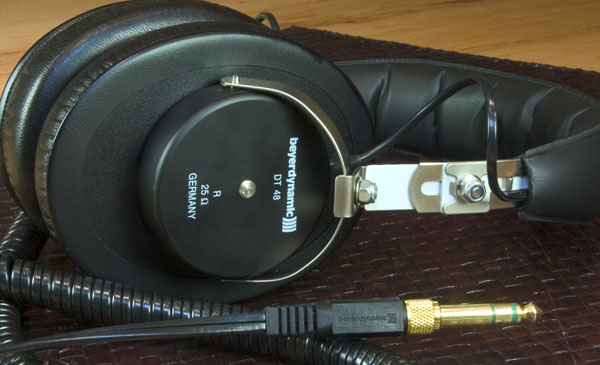
Sound Quality
Ahhh ... I'm afraid this is where the DT 48 E stumbles a good bit. I hear a significant lack of weight in the bass; and some missing information up top. The low frequency sibilance seemed recessed, and higher frequency components of those sounds were accentuated yealding a more piercing chirp than would be natural. These are clearly a mid-range heavy headphone, but I feel like the sound of the cans is solid and predictable. They do strike me as a headphone one could get used to even though they are colored. Many pro recordings done in the field are for speech purposes, and I think the response through the mids, coupled with the reliable seal and steady sound, would make these a decent pair of cans for location recording for voice. I think they're too colored, however, for music recording; too many bits will go missing.
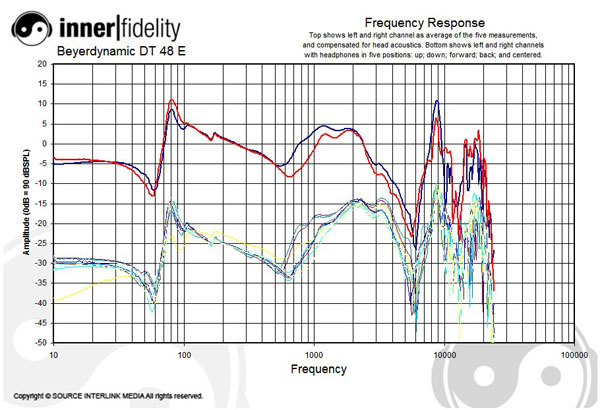
Fig. 2 shows the frequency response of the DT 48 E.
Here you can see a large feature in the bass centered at around 80Hz. I don't see a primary driver resonance at this frequency in the impedance curve,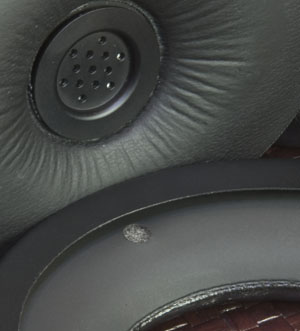 and I've not seen much like it elsewhere except to say that sealed cans sometimes have odd features in the lows. I scratched my head for a while about this, and decided to take off the earpads to look for a port in the chamber or something. Well, I found something, but not quite where I had expected: it was on the inside of the earpad cushion.
and I've not seen much like it elsewhere except to say that sealed cans sometimes have odd features in the lows. I scratched my head for a while about this, and decided to take off the earpads to look for a port in the chamber or something. Well, I found something, but not quite where I had expected: it was on the inside of the earpad cushion.
So, total hair-brained guess here, but I reckon the seal with these cans is so good and the cushions so springy that at around 80Hz the whole headband/earpad/earcup starts resonating and bouncing in and out away from the head. My guess is that the hole in the earpad spoils some of the Q (quality of the resonant system) of the spring of the cushions. Got all the gear, might as well measure it I guess, eh?
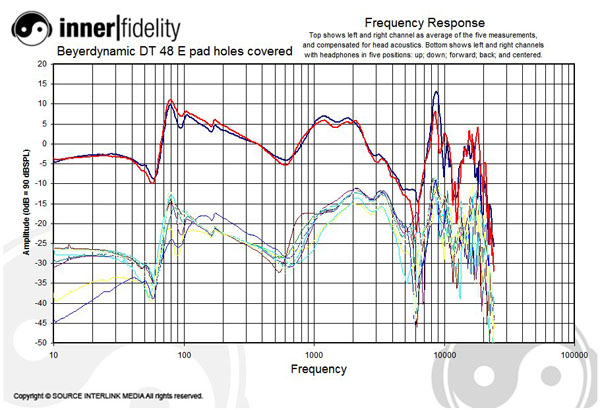
Fig. 3 shows the frequency response of the DT 48 E with the small holes on the inside of the earpads covered.
Here we can see only a slight difference in the ever so slightly larger amplitude of the dips at 90Hz and 180Hz, and that I had a harder time achieving a seal as evidenced by the more common variation of the low frequency responses of the raw data curves in the lower graph. I'd say it's possible, but inconclusive that the little holes damp some low frequency issues.
These headphones are definitely specified as headphones to be used with a source impedance of 120 ohms. I thought it would only be fair to do it (even though I figured it wouldn't make a difference), so I broke down and soldered up a little in-line 120 ohm adapter and re-measured the cans.
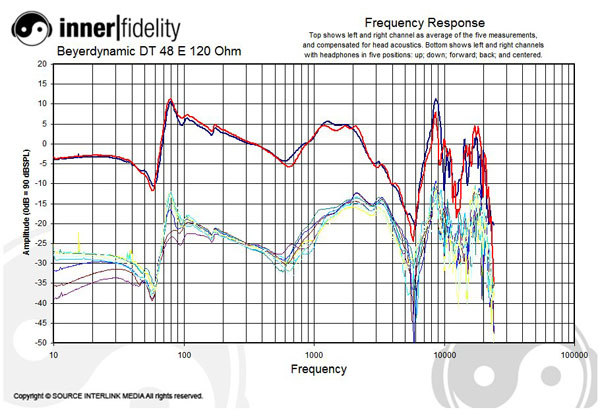
Fig. 4 shows the frequency response while being driven from a 120 ohm source output impedance.
Well ... I don't know about you, but I see very little difference in these data compared to Fig. 2 above when driven from a 2 ohm output impedance.
:P
Speaking of impedance, you can look at the impedance graphs in the full measurements .pdf download (at the end of the article), but these headphones are marked as 25 ohm cans, and they're really more like 33 ohms. No big deal, jus' saying.
Lastly, I have to admit that it was quite a challenge getting these headphones to seal on the head. The graphs above took quite a while. Given that these headphones have such a weird feature in the bass, I figured I should try doing a set of curves where I didn't try to get a seal, but simply put the cans in the right position on the head and take what comes.
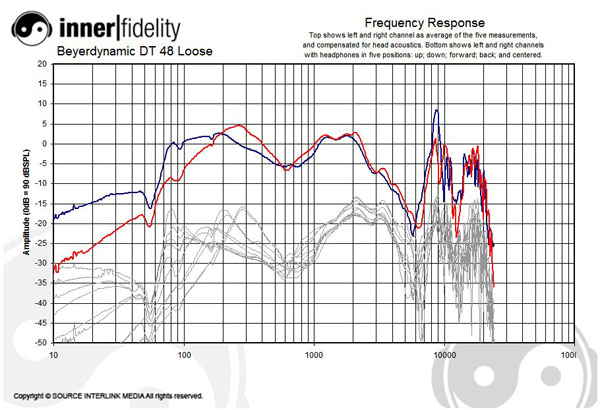
Fig. 5 shows the frequency response when I simply placed the headphones on the head without looking at the signal to see if they were sealing or not.
Here you can see that there is a return of bass energy when you do get a seal as noticeable in the curves below 60Hz --- better seal gave higher bass energy. But you can also see a resonant peak of some kind that moves between 80Hz (with a good seal) and 300Hz with a poor seal. Acoustic half-wavelengths at this frequency are roughly between 18" and five feet, so the cause of this feature is not likely acoustic resonances in the ear-cup. More likely is a mechanical resonance in somewhere in the physical headphone itself.
So, I tapped the earpiece. Quite a loud "thuddy-thud-thud" I heard. I suspect the spring steel construction, bouncy earpads, and tight seal to the head (or not) make for a significant ring in the system between 80Hz and 300Hz. As other evidence, look at the isolation graph in this area: there is a hump above zero which means these cans are actually louder inside than the noise outside. In other words, they amplify outside noise at these frequencies. Had I not already packed them for return, I would have measured them with a sweatband over them to see if it damped the oscillation.
Summary
These headphones are far too colored for me to consider them a really good professional music monitoring headphones. They might have been quite good against the competition for the first four or five decades of their life (and that's saying something), but these days I'd steer professional field recordists to in-ear monitors like the Jerry Harvey JH13 ($1099), Shure SE535 ($549), and Etymotic ER4PT ($299); or to full-size sealed cans like the Denon AH-D2000 ($349) and Shure SRH840 ($250). I do not recommended the DT 48 E 25 ohm for professional recording purposes where high-fidelity is required.
None the less, their forward mid-range and clarity of enunciation (even if the highs are a bit artificial), coupled with high isolation and indestructible build quality makes for a very good field recording professional headphone for voice.
The DT 48 heritage makes them a highly attractive bagging for rabid headphone enthusiasts, and as I gently repack them for return to their rightful owner, I know I'll miss their vibe around the lab. If any one has a set of DT 48 E 200 ohm or DT 48 A.00 and would allow me a listen and a measure, please let me know.
Resources after the video!
Here's the InnerFidelity Measurements in .pdf form.
Beyerdynamic DT 48 E web page and .pdf spec sheet.
Head-Fi gear review page, and big thread.
And, believe it or not, the DT 48 Facebook Page.
- Log in or register to post comments




































